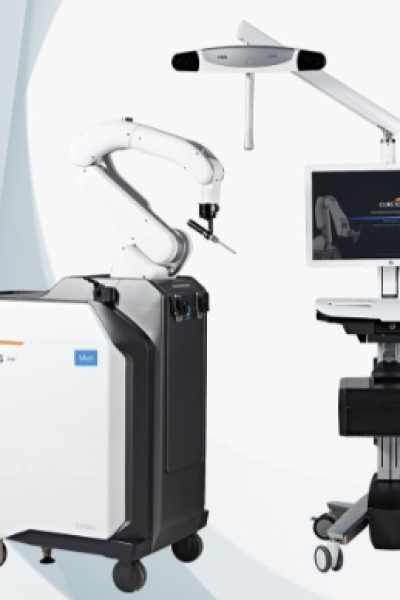Robotic Knee Replacement
Robotic knee replacement, also known as robot-assisted knee arthroplasty

Robotic knee replacement
Robotic knee replacement, also known as robot-assisted knee arthroplasty or robotic-assisted knee surgery, is an advanced surgical technique that incorporates robotic technology to improve the precision and accuracy of knee replacement procedures. Here’s an overview of how it works and its benefits: Procedure Overview: Robotic knee replacement involves the use of a robotic arm and specialized software to assist the surgeon during the procedure. Before the surgery, the patient undergoes preoperative imaging, such as CT scans, to create a 3D model of the knee joint. During the surgery, the surgeon uses the robotic system to precisely plan the placement and alignment of the implant components based on the patient’s unique anatomy. The robotic arm is then used to assist the surgeon in executing the preoperative plan with a high degree of accuracy.
Benefits:
Improved Accuracy: Robotic technology allows for more precise implant placement and alignment, potentially leading to better outcomes and longevity of the implant. Customized Planning: The preoperative imaging and 3D modeling enable the surgeon to tailor the surgical plan to the patient’s individual anatomy, optimizing the fit and function of the implant. Minimized Tissue Trauma: Robotic systems can help minimize soft tissue damage during the surgery, leading to faster recovery times and reduced postoperative pain. Enhanced Patient Satisfaction: By improving the precision of the procedure and potentially reducing complications, robotic knee replacement may result in greater patient satisfaction and improved overall quality of life.</br>
Considerations: Cost: Robotic knee replacement may be more expensive than traditional knee replacement surgery due to the additional equipment and technology involved. Learning Curve: Surgeons need specialized training to use robotic systems effectively, and there may be a learning curve associated with adopting this technology. Patient Selection: Not all patients may be suitable candidates for robotic knee replacement, and the decision to use robotic technology should be made on a case-by-case basis in consultation with the surgeon.</br>
Outcomes: Studies have shown that robotic knee replacement can lead to more accurate implant positioning, reduced risk of complications such as implant loosening or instability, and improved functional outcomes compared to traditional knee replacement surgery. However, long-term data on the outcomes of robotic knee replacement are still being collected, and further research is needed to fully evaluate its effectiveness and durability.</br>
In summary, robotic knee replacement is an innovative approach to knee arthroplasty that offers potential advantages in terms of precision, customization, and patient outcomes. However, it’s essential for patients to discuss the pros and cons of this technology with their surgeon to determine the most appropriate treatment approach for their individual needs.



